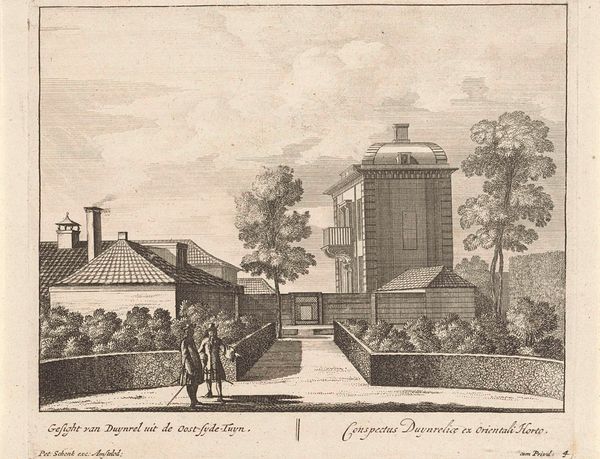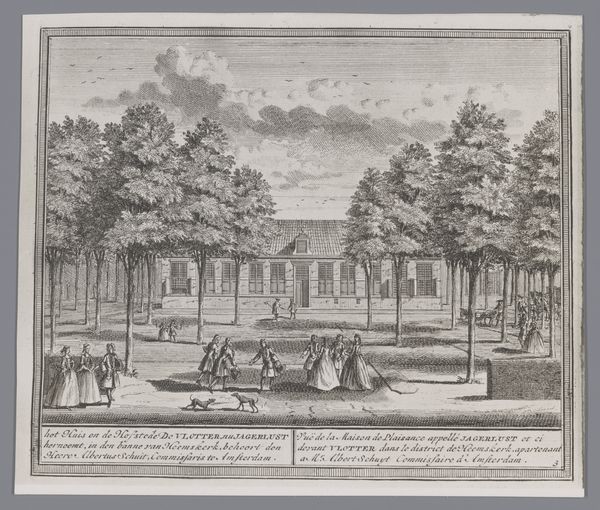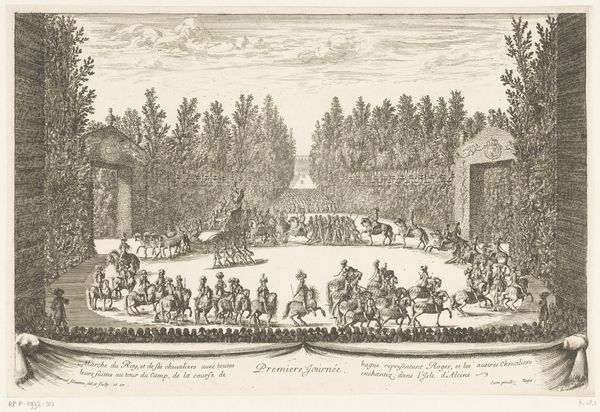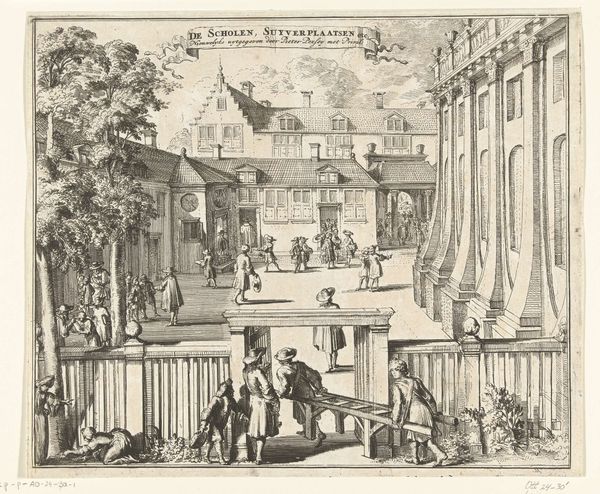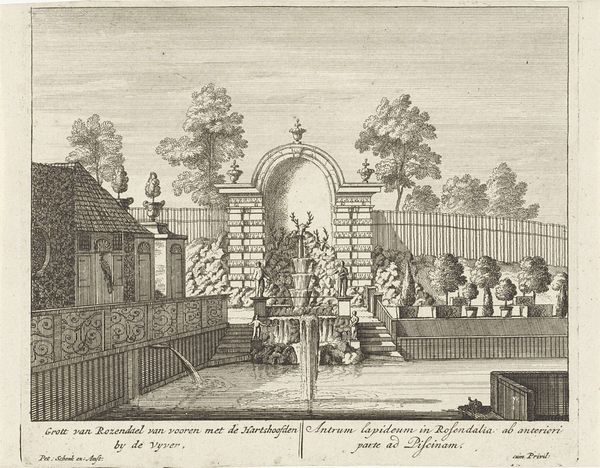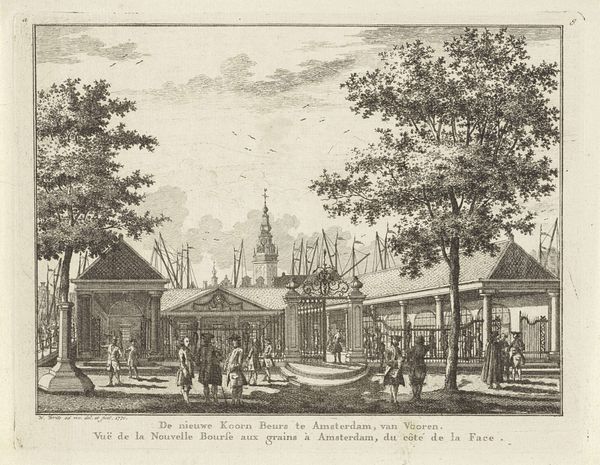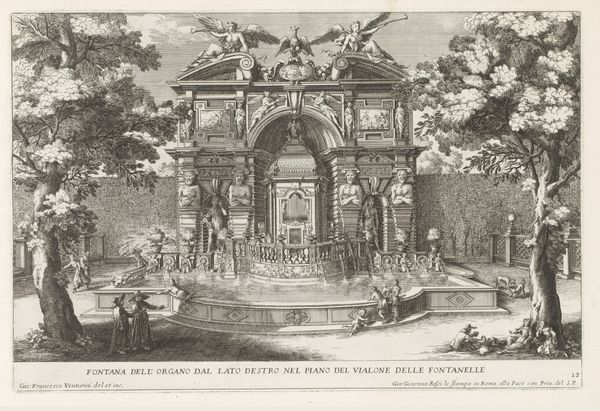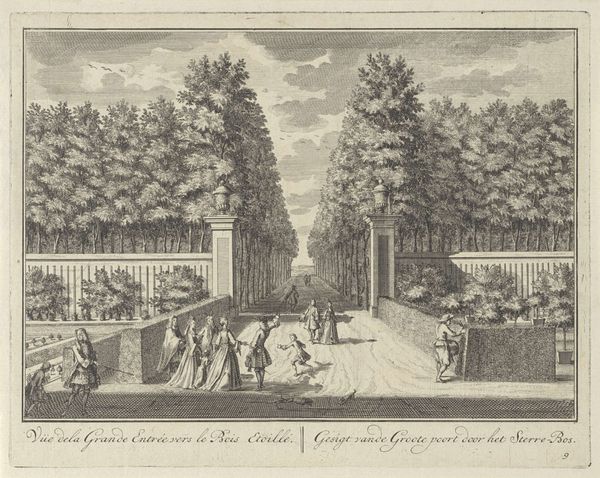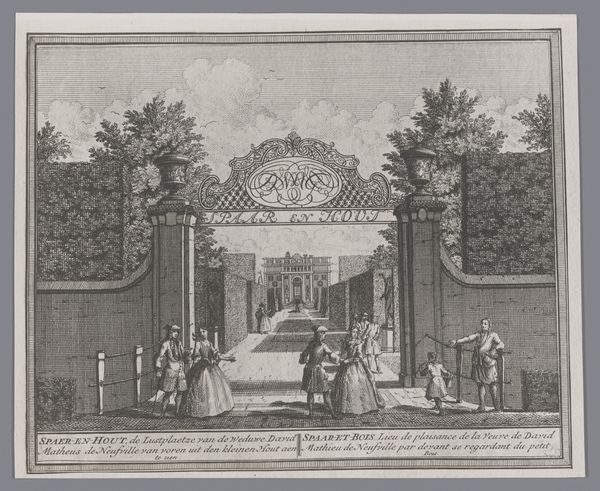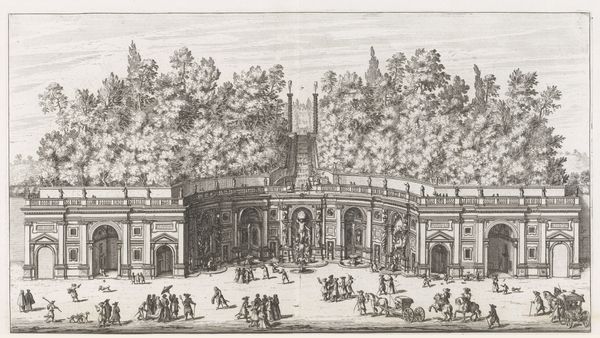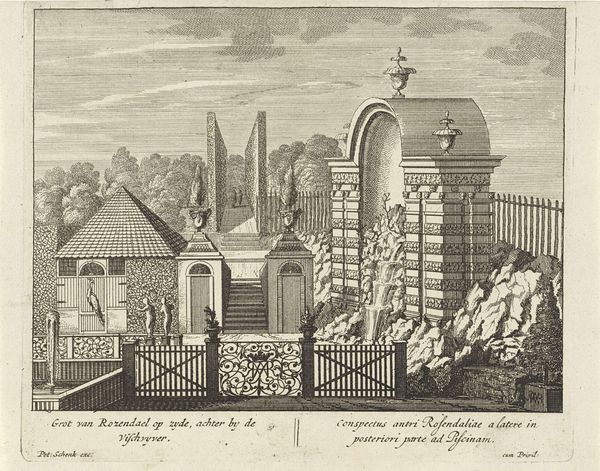
print, engraving
# print
#
caricature
#
old engraving style
#
romanticism
#
cityscape
#
engraving
Dimensions: height 278 mm, width 368 mm
Copyright: Rijks Museum: Open Domain
Curator: Look at this satirical print, made around 1830. It’s titled “Spotprent op het muziekconcours te Brussel, 1830,” or “Caricature of the music competition in Brussels, 1830.” It appears to be an engraving, a scene crowded with figures against a backdrop of rather formal architecture and garden structures. Editor: It has a rather chaotic, almost feverish energy to it, despite the precision of the engraving technique. There's so much activity crammed into a small space, and the overall monochrome amplifies the intensity. What was happening in Brussels that prompted such a frantic depiction? Curator: Precisely! What we see here is an interesting artifact offering social commentary through its depiction of a particular event. Considering the date, 1830, this print very likely relates to the Belgian Revolution. Brussels was a hotbed of political and cultural tension. Notice the flags and banners being waved; this likely critiques the various factions and nationalistic fervor at play during the competition and leading up to the uprising. Editor: It’s interesting to see what's deemed worthy of satire. Music as a focal point during revolution feels like a poignant commentary on culture’s role in defining or disrupting identity. The means of production, being an engraving, suggests relatively widespread dissemination. Prints allowed for political critique to circulate rapidly, contributing to a shared sense of unrest and perhaps solidifying a national identity in opposition to perceived oppressors. I would be curious about the engraver and printmaker and the production process! Curator: Right, and we can imagine how readily such a print, reproduced in multiples, could disseminate sentiments throughout the city and beyond. This caricature offers a window into the lived experience of political and cultural ferment during a pivotal moment in Belgian history. It reflects how identities were being negotiated through events like the music competition. Editor: A chaotic tableau, etched in ink and fueled by political unrest. Thinking about materiality helps me see it almost as a form of propaganda that contributed materially to shaping cultural memory. This exploration makes the artwork resonate beyond just a historical curiosity, right? Curator: Agreed. This engraving helps us explore the ways art and cultural events were entangled with revolutionary sentiments, contributing to social change.
Comments
No comments
Be the first to comment and join the conversation on the ultimate creative platform.
